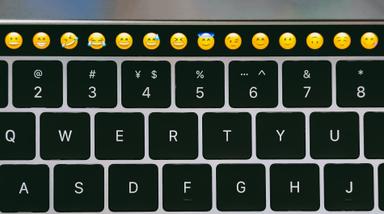Borrowing against your portfolio instead of selling stocks

Portfolio line of credit; underrated and misunderstood
We get it: you’re a long-term investor wanting to hold onto your beloved stocks. But you find yourself in a situation where you need a sizable chunk of cash. Did you know there is an easy option for you to access capital without selling your stocks? It’s called a portfolio line of credit. Otherwise known as borrowing against your stock portfolio. This cash is available at low interest rates – lower than most personal loans, auto loans, mortgages and HELOC’s1. Your stock is serving as collateral, and therefore reducing risk for the lender. Note that, even though your stock serves as collateral, you are still free to trade the stock2.
You may ask yourself why you haven’t heard of a portfolio line of credit before. You probably have, but didn’t realize it. Many trading platforms tell their customers about margin loans, but only in the context of using those funds to trade within that specific account — also known as good, old-fashioned leverage aka complex (and risky) investing strategies.
However, portfolio lines of credit have a more practical use — you can use it to withdraw money, and use these funds for anything you want.
How does a portfolio line of credit work?
In the case of a Frec Direct Indexing portfolio, the more diversified the portfolio, the lower the risk and the more you can borrow. You can borrow up to 70% of the value of your portfolio, with interest rates at 6.33% (as of Nov ‘23) compared to 20%+ for credit cards3. And unlike applying for a personal loan, with a portfolio line of credit, there is no background check or underwriting process. It’s all based on the size and components of your portfolio.
One of the main benefits is that you are not required to make any monthly principal payments on a portfolio line of credit. Instead, you will repay the interest. And even then, this interest doesn’t even need to be paid right away — you can simply add the amount of interest to the amount you borrowed. Frec’s interest rate is always the Effective Federal Funds rate plus 1%, which is lower than rates for the top five brokerage firms. With a portfolio line of credit, you can hold the borrowed amount indefinitely if your underlying securities continue to perform well and remain stable enough to borrow against.
What is a margin call and why does it have a bad reputation?
There is one circumstance in which you’d have to pay down a portion of the principal, and that is if you receive a margin call. This happens when the value of your stocks falls below what you have borrowed4. Let’s say that you took a portfolio line of credit for $20,000 (which was the max of what you could borrow). If the value of your portfolio drops to $19,000, you will be required to sell some stock or deposit cash to cover the $1,000 difference. Think of a margin call as an enforced “principal repayment” that comes due when the collateral is no longer safe for the lender.
Margin calls have a bad reputation because at most other brokerages, you’re left in the dark about when you might receive a margin call, or what will happen if you do. The old-school providers notify you when it happens without much warning. At Frec, we not only answer all of these questions for you, but we provide tools to help predict the likelihood of your receiving a margin call.

When you should consider a portfolio line of credit
Sophisticated investors have been employing this technique long time – often via wealth advisors and for the purpose of advanced trading. While that remains a use case, we see more potential in the more practical case of temporarily accessing cash at a low rate when you need to make a large purchase or cover unexpected expenses. Hit with a big tax bill? Need to pay for your children’s expensive tuition? Facing unexpected renovation costs? With Frec’s portfolio line of credit, there is no need to sell your stocks or become indebted to your credit card company.



